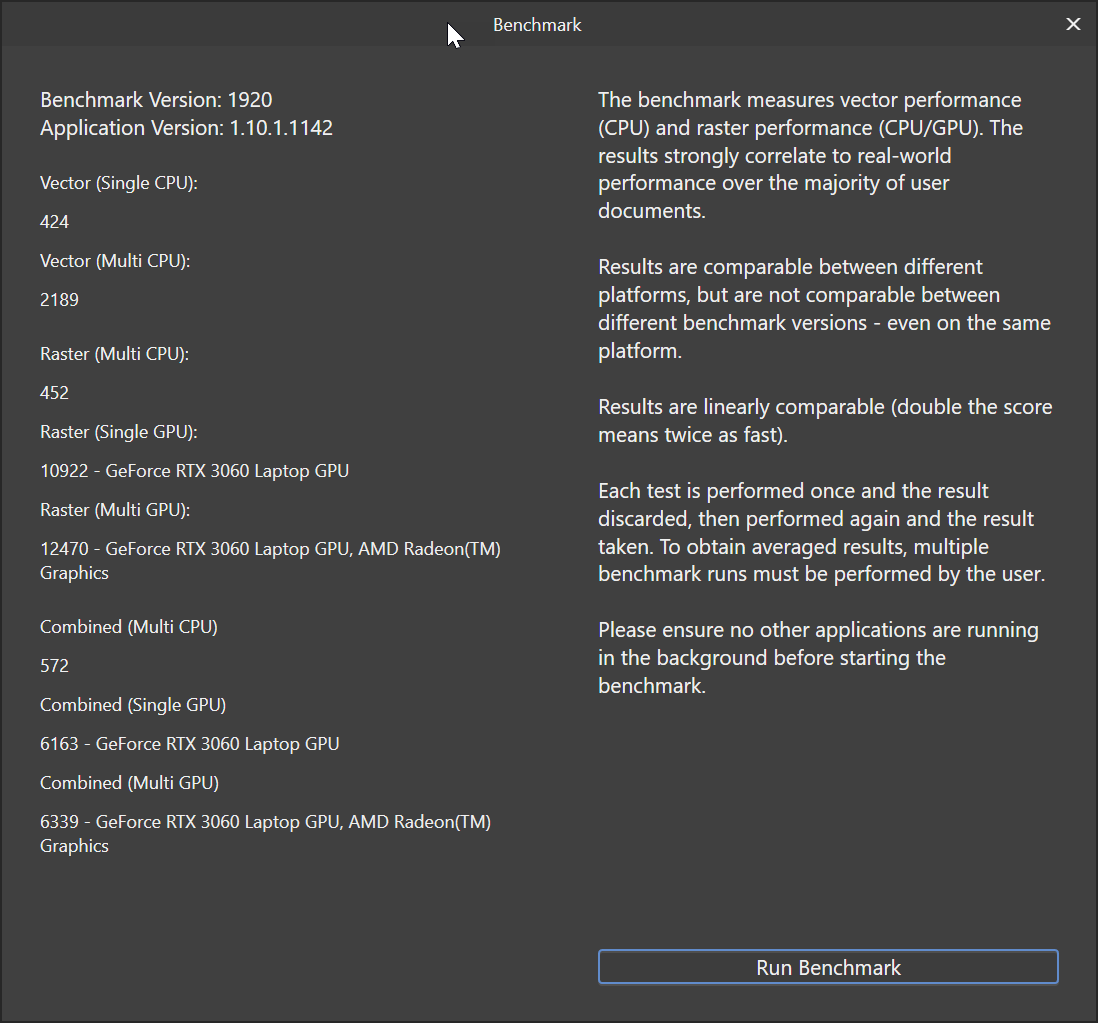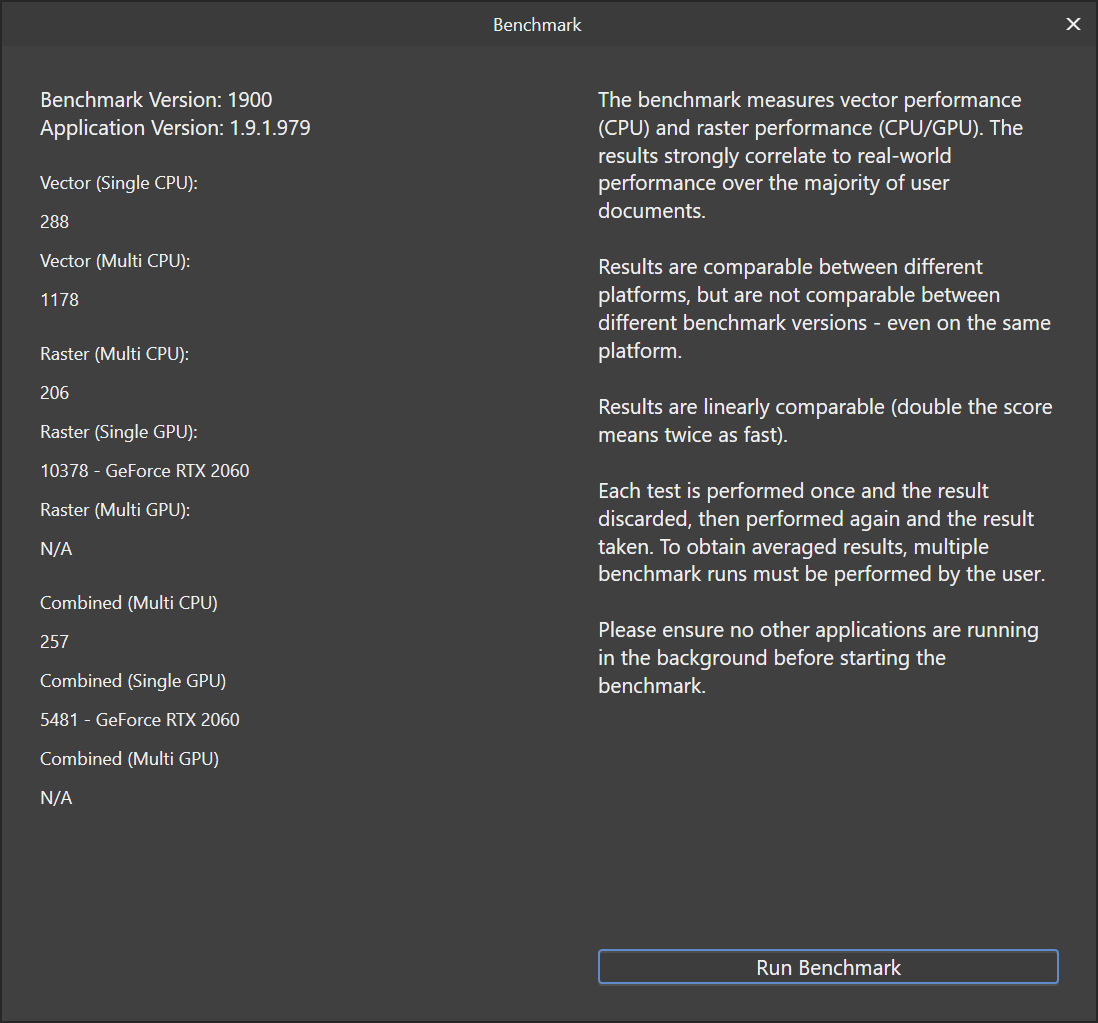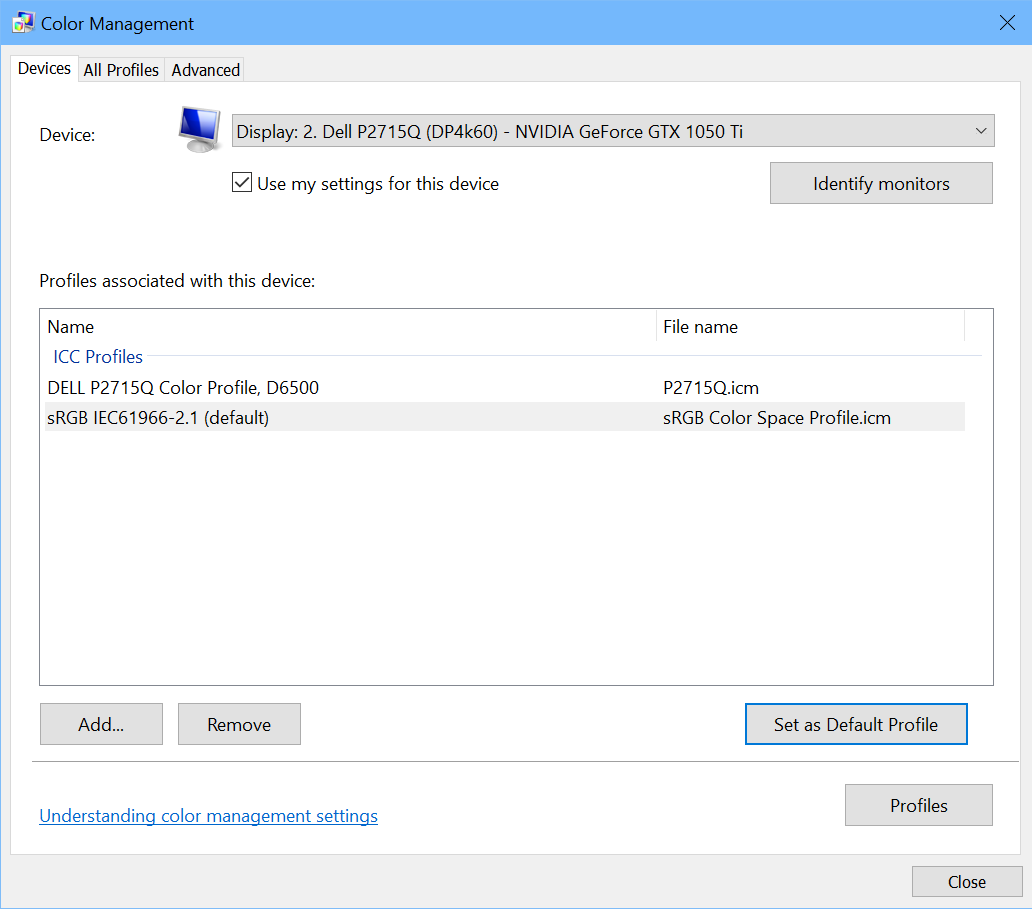
Eftaliotis
Members-
Posts
32 -
Joined
-
Last visited
Recent Profile Visitors
The recent visitors block is disabled and is not being shown to other users.
-
 Eftaliotis reacted to a post in a topic:
V2 Affinity Photo: Disappearing controls on iPad Pro 4th Gen
Eftaliotis reacted to a post in a topic:
V2 Affinity Photo: Disappearing controls on iPad Pro 4th Gen
-
 walt.farrell reacted to a post in a topic:
V2 Affinity Photo: Disappearing controls on iPad Pro 4th Gen
walt.farrell reacted to a post in a topic:
V2 Affinity Photo: Disappearing controls on iPad Pro 4th Gen
-
I have an iPad Pro 12.9" 4th gen, 256GB with plenty of free space, and Affinity Photo 1 runs just fine on it. I just upgraded to version 2 and I can't use the adjustment layers because the controls disappear as soon as I touch them, same with both finger and pencil. I think they are becoming semi-transparent, but so much so that the controls are completely invisible. As far as I can see, there is no setting for adjusting this.
-
I have Affinity Photo running on two machines: A desktop with a 7th gen Core i7 and RTX 2060 (4 cores, 8 threads) and a laptop with a Ryzen 9 (8 cores, 16 threads) and RTX 3060. Comparing the Affinity benchmarks from these two systems is interesting: The difference between single-core and multi-core vector performance on both machines is approximately 4X. That would seem to indicate that only a maximum of 4 cores/threads are being used, at least for that. Otherwise I would expect a significantly larger difference between single and multi core performance on the 8-core machine -- most likely not 8X, but it should be at least 6X, not just 4X.
-
Another question: I notice that the vector performance for multi CPU compared to single CPU is roughly 4X on both processors, although one of them has 4 cores and the other 8 cores (or 8 and 16 threads, respectively). I would expect the multi-core gain to be a lot more on the 8-core CPU. Is Affinity limited to only using a certain maximum number of threads, or is there some other limitation?
-
Thanks for the response. This is now looking OK, here are the current results: By the way: Would it be worthwhile to activate the CPU's GPU in the mainboard's BIOS, even if it isn't connected to anything? I notice that my Asus G14 laptop uses both GPUs in Affinity, and I was wondering whether this would help on the desktop machine as well. The performance on that laptop is pretty impressive, by the way:
-
 Eftaliotis reacted to a post in a topic:
Drawing Tablet Recommendation
Eftaliotis reacted to a post in a topic:
Drawing Tablet Recommendation
-
 Eftaliotis reacted to a post in a topic:
Drawing Tablet Recommendation
Eftaliotis reacted to a post in a topic:
Drawing Tablet Recommendation
-
I performed one benchmark yesterday on 1.9.1 and another one today on 1.9.2. The GPU results on 1.9.2 are massively lower, see the attached screenshots. I don't notice any subjective differences so I'm assuming Affinity is working normally and this is just a cosmetic difference. Any ideas on what might be causing this? There is one other difference since yesterday: I doubled my RAM from 32 to 64 GB, but with 2 identical DIMMs from the same manufacturer, exactly the same specs in every way. I wanted to downgrade to 19.1 to see whether that might be a factor, but the installer didn't allow me to do it.
-
 Chris B reacted to a post in a topic:
Crash to desktop when creating or opening document
Chris B reacted to a post in a topic:
Crash to desktop when creating or opening document
-
 Mark Ingram reacted to a post in a topic:
Crash to desktop when creating or opening document
Mark Ingram reacted to a post in a topic:
Crash to desktop when creating or opening document
-
Crash to desktop when creating or opening document
Eftaliotis replied to Thoerup's topic in V1 Bugs found on Windows
Sure. Here you go. P2715Q.icm -
 PaulAffinity reacted to a post in a topic:
Crash to desktop when creating or opening document
PaulAffinity reacted to a post in a topic:
Crash to desktop when creating or opening document
-
Crash to desktop when creating or opening document
Eftaliotis replied to Thoerup's topic in V1 Bugs found on Windows
Update: Switching from the standard Dell profile for my 4K monitor to the srgb profile also solved the problem. I can now switch off Windows 8 compatibility mode without getting the crashes any more. I kept the old Dell profile as well and just selected the srgb one as the default. -
Crash to desktop when creating or opening document
Eftaliotis replied to Thoerup's topic in V1 Bugs found on Windows
FYI: I Just purchased and installed Affinity Photo for Windows today and had the same problem on my desktop machine with an Nvidia GTX 1050 Ti graphics card. Affinity would crash to desktop directly on opening any photo file, raw (Fuji RAF) or any generic format (TIFF, JPG, PNG etc). The solution was to set Windows 8 compatibility mode for starting the Affinity Photo EXE. However, I'm a little concerned that this might limit features. Is this the case? Note on my system: I use the Nvidia Studio drivers, not the Gaming drivers. Core i7 6700 processor, 32GB of RAM, Windows 10 latest updates. I'm updating the graphics card to an RTX 2060 in a couple of days. -
 Christian S. reacted to a post in a topic:
Affinity Photo iPad for serious photo editing
Christian S. reacted to a post in a topic:
Affinity Photo iPad for serious photo editing
-
 Cantisani reacted to a post in a topic:
Affinity Photo iPad for serious photo editing
Cantisani reacted to a post in a topic:
Affinity Photo iPad for serious photo editing
-
 GDPR-415734 reacted to a post in a topic:
Show Stopper: Exporting in Affinity iPad
GDPR-415734 reacted to a post in a topic:
Show Stopper: Exporting in Affinity iPad
-
Show Stopper: Exporting in Affinity iPad
Eftaliotis replied to Eftaliotis's topic in Feedback for Affinity Photo V1 on iPad
That's a reasonable criticism. However, to be fair I wasn't really expecting that, and I had also done extensive tests on it on my old Gen 1 iPad Pro that showed me how capable Affinity potentially was. That is why I bought the new iPad for it. I just misjudged how much I would miss all the other tools. Also, Affinity is much more than a $25 app, and that is one of its problems. Despite the things that I personally found annoying, its capabilities really do rival Photoshop for a large section of photo editing, and at the moment it is way more capable than the current version of Photoshop on the iPad. (And at the slow rate Adobe is adding features to Photoshop for iPad it's going to be a couple of years before they catch up.) I understand why the generally low price level of apps on iOS forces Serif to charge such a low price. However, that is probably holding them back. It's definitely a professional-class application with professional potential, and for what it can do and can become it should really cost a LOT more. Then Serif would have more resources for better support and investing more in development. Unfortunately, they would get crucified with 1-star ratings in the App Store if they tried to charge that. Also, now that they've started at such a low price it's really difficult to increase it -- lowering prices is always easy, raising them is very hard. And that is really the conundrum of professional class apps on the iPad: The App Store has created such a low price level that it's very difficult to justify development of apps with the kind of depth and breadth that Affinity Photo definitely has. That is most likely why we're not going to see a version of Capture One on the iPad any time soon. Phase One charges professional prices for professional software and they won't be expanding to the iPad as a platform before there is a reasonable chance of getting a better return there. My guess is that is also the reason Adobe is not pushing ahead with Photoshop for the iPad development all that quickly: Even though they are covered by including it in the general subscription plan, the iPad is still not a very attractive business proposition as a platform for professional-grade apps that have a smaller niche market and must charge higher prices to be economically viable. -
Show Stopper: Exporting in Affinity iPad
Eftaliotis replied to Eftaliotis's topic in Feedback for Affinity Photo V1 on iPad
That's quite possible, even though I worked through many of the tutorials on the Serif site and invested in a paid course on Affinity Photo for the iPad and worked all the way through it before asking any questions. The fact is, even if Affinity had been perfect for me in itself I would have switched back from the iPad to a laptop because the entire platform is just not ready for my kind of photo editing. That is not a reflection on Affinity, it's just the way I want to work: I need a wide range of tools and plugins, I need the full functionality of both Capture One and Photoshop, I need all the original Fuji film simulations on RAW (and no, LUT approximations are not the same thing) and also the ability to use tools from additional programs like Luminar 4 and others. Above all, my money-making work is in Windows software development, and I frequently have to do some work while on the road doing photography as well. If I switch to the iPad I need to carry both my laptop and my iPad, and that is too much weight, and even more importantly too much unnecessary expense, particularly when the laptop is actually a much more capable photo editing platform in terms of all the tools available to me. I really, really like the iPad and I like working on it. That is why I succumbed to temptation and upgraded my old Gen 1 iPad Pro to the 2020. It really pained me to return it, I would have loved to keep it. But even without the annoyances in Affinity I still would have done it, for now, because for the work I need to do I need a laptop upgrade and the very expensive iPad would just be an additional luxury that I can't justify at the moment. -
Palm Rejection Buggy Lately [I'm left handed]
Eftaliotis replied to Alewan's topic in Pre-V2 Archive of iPad Questions
I had this problem as well and I'm right-handed. Even with touch set to "Gestures only" so that I can only draw with the Pencil, the image would jump around horribly every time I rested my hand on the screen, making working with the pencil really difficult. It also made it impossible to adjust spline curves accurately with the Pencil, because the spline curve window would close as soon as I rested my hand on the screen. I had to get a mouse in addition to the Pencil, just for adjusting spline curves accurately. -
Can’t open backed up *.afphoto files
Eftaliotis replied to Eftaliotis's topic in Pre-V2 Archive of iPad Questions
Possibly, but since I'm doing the copying with the Files app and not with Affinity it's probably not an Affinity issue. Actually, the same would apply to the corrupted Exports from Affinity when written directly to the external drive. They're being exported from Affinity, but they're being written by the iPadOS file system. All Affinity can do is to say to the file system, "Please write this". If something goes wrong in the write and the file system doesn't return any error messages there's nothing Affinity can do about it.





